Jeff Cooper did a lot in his time. He wrote books, developed the Modern Technique of the Pistol, invented concepts we still use today, and helped create an entirely new class of rifle. The Scout rifle originated in Jeff Cooper’s mind and was first described in the 1980s as “a short, light, handy, versatile, utility rifle.”

Mr. Cooper was influenced by a man named Frederick Russell Burnham, who was known as the King of Scouts. Burnham was a fascinating character who seems like a work of fiction. He was born and raised on an Indian reservation, where he learned enough from Indians, cowboys, and frontiersmen to go into the scouting business at 14. He fought in local family feuds turned bloody, fought in the army, went to Africa, earned a commission from the Brits, fought in the Boer War, and later helped create the Boy Scouts.
Jeff Cooper has a specific goal in mind with the Scout Rifle and described it as a –
“general-purpose rifle is a conveniently portable, individually operated firearm, capable of striking a single decisive blow, on a live target of up to 200 kilos in weight, at any distance at which the operator can shoot with the precision necessary to place a shot in a vital area of the target.”
The Scout Rifle Specifications
Cooper defined the Scout rifle with specific characteristics. While most assume a Scout rifle is just a bolt action with a long eye relief scope, that’s much too simplified of an explanation. According to Cooper, the rifle would….
- Be chambered in 7.62 NATO or 7mm-08 should be the caliber. Exceptions were made for 243 for small frame shooters.
- Be bolt action primarily, but a reliable, compact semi-auto was acceptable.
- Have a smooth and clean trigger.
- Weigh no more than 7.7 pounds unloaded.
- Have a maximum length of 39 inches
- Have iron sights—these are a must. Optics are optional, and the Scout rifle uses a lower 2x/4x powered, long eye relief optic.
- Feature a magazine with a magazine cut-off.
- Have synthetic stock over wood.
- Have a practical sling to be used as a shooting aid.
- Have a required accuracy of at least 2 MOA.
These are extreme, very specific requirements. Many rifles, even rifles made to be Scout rifles, don’t meet all of the specifications. Its been decades since the Scout rifle became a concept. Are these specifications still relevant? Is the Scout rifle itself still relevant?
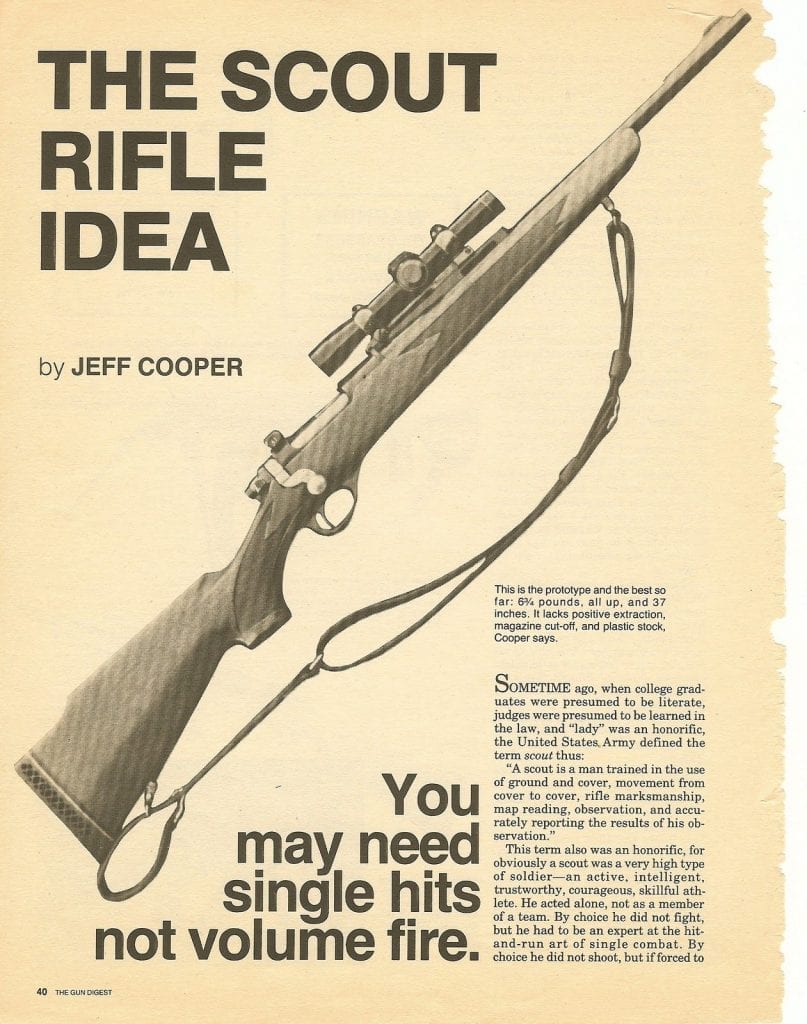
One of the few Scout rifles ever created that clung to those requirements was made by Steyr. With Cooper advising, the Steyr Scout came together, and Steyr manufactures it to this day. But even Steyr broke the rules by producing a 376 Steyr variant and now a 5.56 variant.
I can’t argue that a light, handy rifle designed for utility isn’t a nice place to start. However, I think the specifications are now irrelevant. Things have changed. Technology has advanced, and sticking so close to these specifications ignores advances in rifle technology.
The Modern Scout Rifle
As we know now, semi-auto rifles have become extremely reliable, relatively lightweight, and compact. An AR 10 with an 18 or even 16-inch barrel provides a relatively light platform depending on how the user outfits the stock and handguard. Springfield has gotten their Saint series down to 7.8 pounds, so it’s fractionally heavier than Cooper would’ve wanted but still meets the length requirement.
Also, feeding from stripper clips through the top is silly when detachable magazines exist and are relatively cheap. A ton of modern Scout rifles utilize detachable AR 10 magazines these days anyway.

Let’s not forget, rounds like the 6.5 Creedmoor have become common and outperform the 7-08 and 308 in general. To tack onto that, suppressors have also become much more common—and I can’t see a reason not to make a suppressor an option. Weight and length are increased, but Scouts work alone or in small teams, so stealth would be valuable.
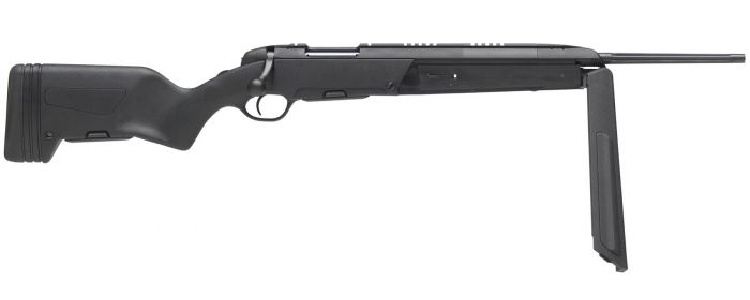
Optics have also changed, and while the Scout-style scope is a trademark of the Scout rifle, I can’t help but think an LPVO would be a much better choice. The Scout scope allowed for open peripheral vision and fast reactive shots. An LPVO allows for the same but also gives you 6, 8, or 10 power magnification.
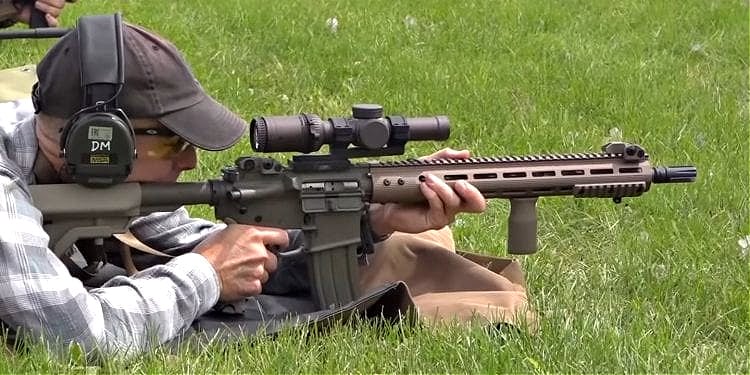
Heck, magnified optics were a necessity in the original rifle, so why not include a red dot and magnifier into your Scout rifle? The Scout rifle was never a long-range sniper rifle, and a red dot and magnifier combo allows you to easily reach out to Scout rifle ranges.
Recon, A Fancy Word For Scouting
When you start looking at it, the modern Scout rifle is essentially a Recce rifle, except in a full-powered rifle caliber. Isn’t Recon just a fancy word for Scouting? Heck, Marine Corps Scout Snipers are mostly wielding suppressed AR 10 variants from Knight Armament these days, and they have Scout in the name.
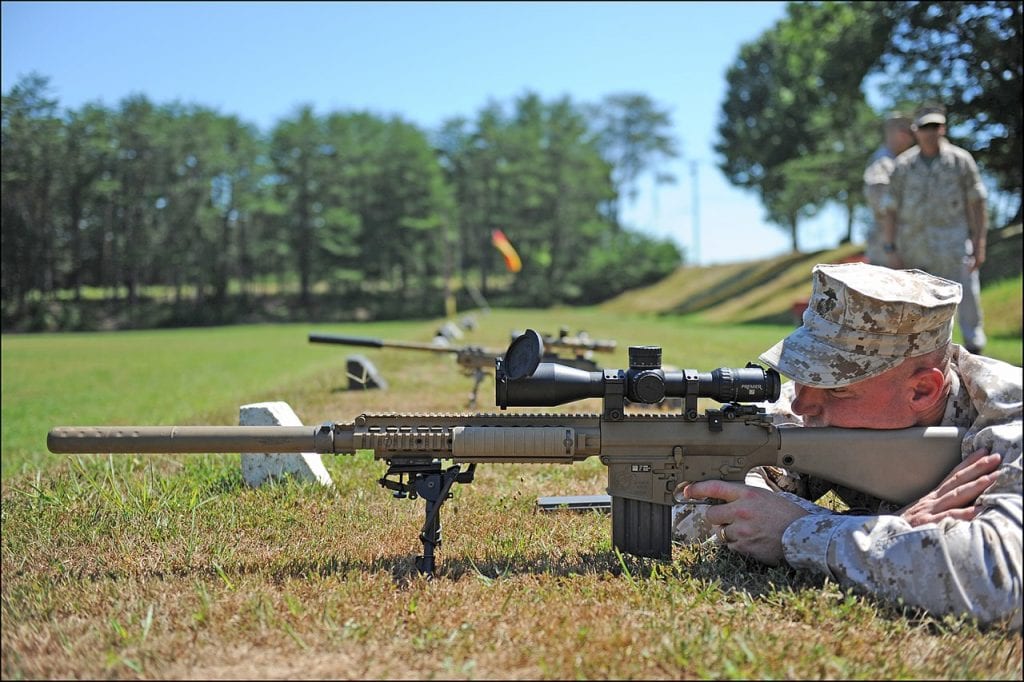
But I want a Real Scout Rifle!
Okay, so you don’t want to fully step into the modern world. I get it. The Scout rifle is a fun concept, and I don’t blame you for wanting a ‘scout’ rifle. A real Scout rifle has to be a bolt action with a forward-mounted scope, according to most.
That doesn’t mean you can’t modernize it a bit. Sure, use your Scout scope, but look into a variable option. Burris and Vortex both make 2-7 power Scout scopes. Try a modern tactical sling instead of an old-school parade sling.
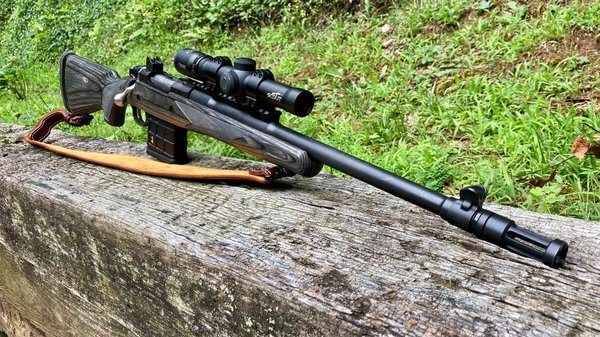
Steyr now produces the Steyr Scout in 6.5 Creedmoor, which provides a ballistically better option for potential Scouts. The Mossberg MVP Scout wisely makes use of a detachable AR 10 style magazine and is also super affordable.
My point is don’t get so wrapped up in the dogma of the Scout rifle. I can’t say for sure if Jeff Cooper would have agreed with me, but for his time, he was often thinking ahead. I just can’t imagine him rejecting the idea of modernizing the Scout rifle with modern optics, actions, slings, calibers, and the like.
What say you? Would Jeff Cooper be open to fancy new optics, suppressors, modern slings, and semi-auto actions? Not to mention new calibers and detachable magazines. Let me know what you think below.


Pingback: The Ridgeline Scout: Christensen Arms "Scout Rifle" - The Mag Life()